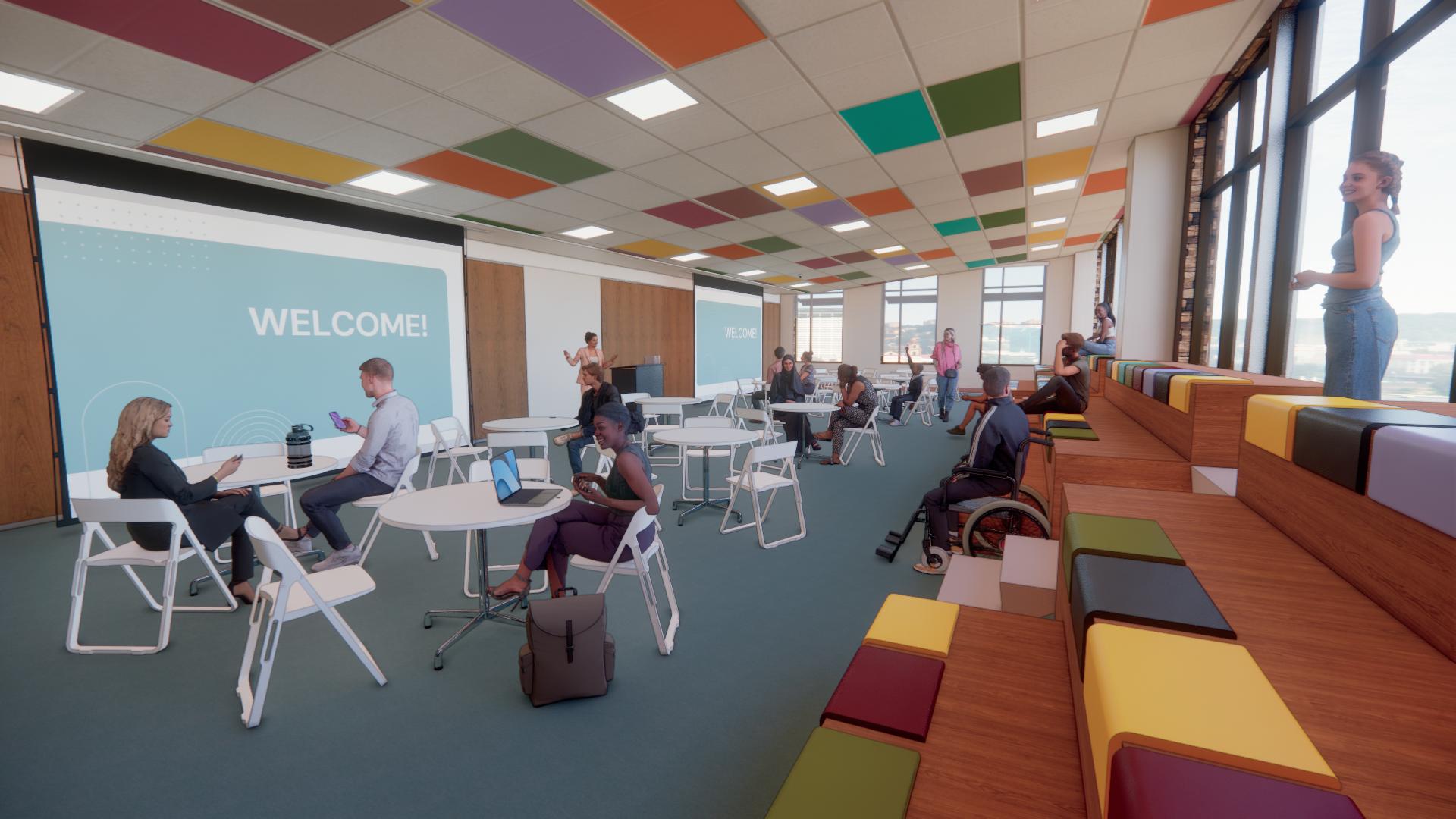
1 minute read
CIRCULATION & NAVIGATION
Minimize the travel distance a student takes between spaces. This reduces strain on students with physical impairments. Long corridors create more distractions for cognitively-impaired students. If unavoidable, place benches in alcoves along long corridors to allow students to rest (MEXT, 2012).
Design to encourage independent wayfinding as much as possible. Use visual cues, signage, and tactile cues to ease navigation. Clearly mark the location of elevators, stairwells, and restrooms. Include a trail rail that provides tactile guidance and physical support in corridors (Rinaldi, 2016). Provide obvious signage indicating offlimits areas, and keep them locked.
Advertisement
Use contrast in the color value of stair treads and risers to reducetripping, and refrain from smooth stone or other polished surfaces (MEXT, 2012). Do not rely merely on changes in hue, as students with color blindness and low-vision may not be able to differentiate.
Use high contrast between stair treads and risers to reduce tripping
Place benches in alcoves in long corridors to allow students with limited mobility to rest.
Clearly indicate placement of restrooms, elevators, and stairwells, and provide signage if needed.
Refrain from using polished or slick floor surfaces.
Include a handrail to provide physical support for users with limited mobility and serve as a wayfinding guide for users with vision impairments.
Select trim and door colors that contrast with the wall colors so users with low vision can distinguish between them.







